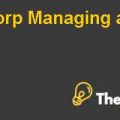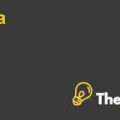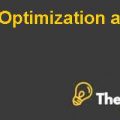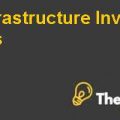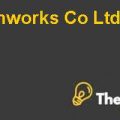Introduction
The company was formed in 1907 by Jim Casey, It focuses on delivering messages in Seattle. The company has changed a lot during its 98 years. It changes from being a message to package delivery services. Then it became an international air transport company and finally a logistics company in 1990s. The company delivers more than 15 million packages a day to about 6.1 million customers in 200 countries. It is headquartered in Atlanta, Georgia and operates in the United States. It has 428,000 employees.
The competitors of the business are Federal Express (Fed Ex), DHL International and the United States Postal Service. The CEO of the organization is Mike Eskew. The structure of the company is decentralized. Senior management and staff set directions, priorities and budgets. The strong values of the company are service excellence, employee ownership, commitment to stability and a loyal workforce.
In 1997 and 2007, the management conducted a scenario planning exercise and changed their local stance to global. They identified the areas they should focus on to become the global leader.
In 1997, the key focus of the exercise was the future of UPS Global business in the competitive environment. The Scenario planning workshops were held and two key axes were formed. The horizontal axes shows the market environment and the vertical axes showed demand characteristics of consumers. In 2007, they conducted the similar scenario but includes different members. It assist the company to identify the weaknesses and strengths of the business.
Eskew was concerned about the exercise of scenario planning. He embraced the fact that this exercise help them see the future in a different manner. However, he was not sure about its impact on the organization. He was not sure whether the scenarios were making the foundation of future strategic plans. He was also concerned the way the managers were thinking. He wanted them to be creative and take account of events that could happen in future such as a terrorist attack. Were they doing enough to monitor early warning signals? Should participation be increased to include field management? Was Scenario planning an exercise that really benefited the managers and the strategists of the company?
What are the strengths and weaknesses of scenario planning?
Scenarios have become very popular and a useful tool to develop a strategy in this highly uncertain and fast changing world. It helps organization to avoid feared analysis paralysis. It can assist companies to develop strategies for their future and avoid searching for the next big idea desperately in the future.They are not trend predicting exercises with the risk and sensitivity. In scenario planning, an organization creates a limited number of possible outcomes or situations and then work out the actions they would take in the scenario(Scenario Planning, 2012).
The activity allows managers to imagine possible futures and the ways the strategy should be changed or transformed accordingly. It is a new method designed to change the way managers think. It encourages creativity and provide real insights of the business. It also encourages outside the box thinking according to the scenarios the business finds himself in.Presently, this technique is used by many of the big international not-for-profit organizations, including Amnesty International, Oxfam, Greenpeace and the Red Cross, to improve strategic thinking(Scenario Planning, 2012).
There are some drawbacks of this technique. This approach is not well-known in the business world as many charities or not-for-profit organizations do notuse it.As it opens many possible strategies for a business, it may make managers waste their time on unlikely possibilities(Scenario Planning, 2012).
What is your evaluation of UPS’s 1997 scenario planning exercise? Its Horizon 2017 planning exercise? How do the two compare?United Parcel Services Case Solution
In 1997,the key focus of the exercise was the future of UPS Global business in the competitive environment. The Scenario planning workshops were held and two key axes were formed. The horizontal axes shows the market environment and the vertical axes showed demand characteristics of consumers. The result was the formation of four scenarios namely the tangled paths, brave new world, regressive world and the global scale prevails. Then the UPS and its competitors were analyzed according to these four scenarios. The use of actors, actresses,videos and sets was made to show managers real-time scenarios.............
This is just a sample partial case solution. Please place the order on the website to order your own originally done case solution.

